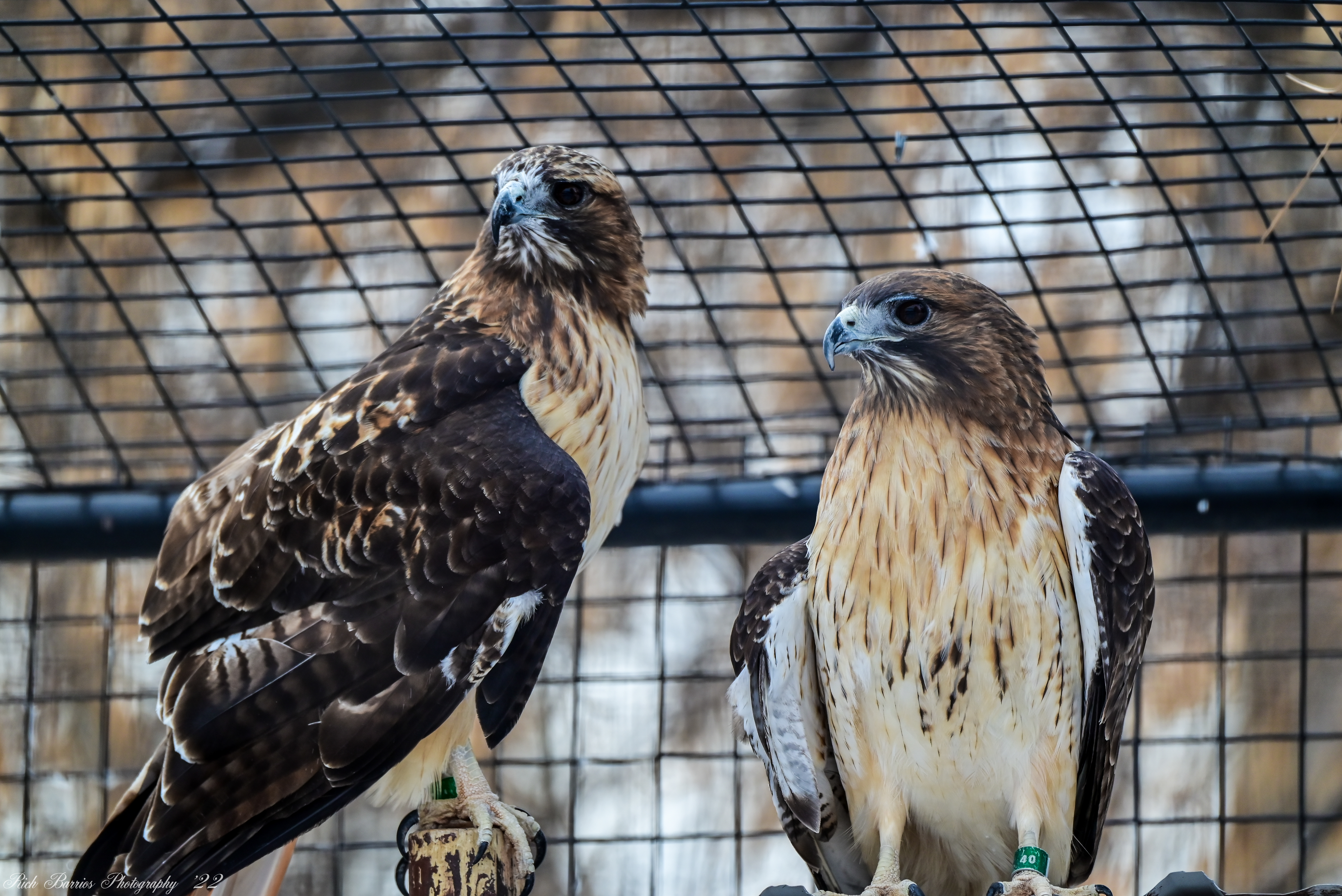* Threatened or Endangered

Red-tailed Hawk *
: Buteo jamaicensis
: Bird
: Found throughout the North American continent, except in heavy forests and the arctic
: small mammals, birds, snakes, lizards and fish if available
: Weight 2 to 5 lbs., wingspread 43 to 57 inches
: Least Concern
• One of the most common hawks in North America, and like all hawks, protected by the Migratory Bird Act.
• It is sometimes called “chicken hawk” due to the mistaken belief that they regularly hunt chickens.
• There are at least 14 recognized subspecies.
• Red-tailed hawks soar much of the time, but when hunting can reach speeds of up to 120 mph in a dive.
• This hawk is successful in large part because it tolerates a wide range of habitats and altitudes, including deserts, grasslands, forests, some tropical rain forests, agricultural fields, and urban areas.
Report all poachers, and do not take in injured wildlife. If you come across an injured raptor, call the North Dakota Game and Fish, local US Fish and Wildlife Services, or the Dakota Zoo so someone can help. Another way you can help is to donate to the Dakota Zoo Conservation Fund, which supports our Raptor Rehabilitation Program. You can learn more by following these links:
www.dakotazoo.org/education/raptor-rehabilitation/
gf.nd.gov/rap
Respect native wildlife by remembering that…it’s wild! When enjoying native land where wildlife lives, always be aware, be safe, and leave no trace. Never approach, taunt, or feed wildlife. Interacting with them can be dangerous to you and to them. Instead, enjoy their beauty and their ecosystem without disturbing them. To learn more, follow these links:
gf.nd.gov/wildlife/orphaned
www.nationalparks.org/connect/blog/tips-safely-visiting-national-parks
